 |
 |
|
SkySat • Kincade Fire, CA • October 27, 2019
|
|
In this week’s issue: Satellites monitor wildfires around the world, a geologic intrigue is spotted in Chile, a new stadium is built in Los Angeles, and a marathon takes place in Antarctica.
|
|
|
|
|
FEATURED STORY
Wildfires
|
|
The consequences of climate change generally take place gradually and to an almost imperceptible degree.
Temperature variation, loss of biodiversity, and heat waves are hard to visualize.
But others, like melting glaciers, reservoir depletion, and wildfires can be clearly expressed through striking images.
These climatic events often take center stage when it comes to photographic representation of climate change.
In particular, the raging infernos, blooming smoke pillars, and scarred landscapes created by wildfires have become a visual shorthand for showing the damaging effects of warming temperatures.
|
 |
|
PlanetScope • Caldor Fire, CA • August 30, 2021
|
|
Wildfires are endemic to many places on planet Earth.
But their frequency, magnitude, and intensity are abnormally escalating as a result of human-induced climate change.
Drought is one of many exacerbating factors.
|
 |
|
PlanetScope • Lava Fire, Mount Shasta, CA • June 28, 2021
|
|
The current megadrought in the Western United States has dried the land to a state not seen since 800 AD.
But there are other causes too, from woodland management practices to aging infrastructure.
While wildfires are inherently unpredictable, the conditions that lead to their existence are not.
|
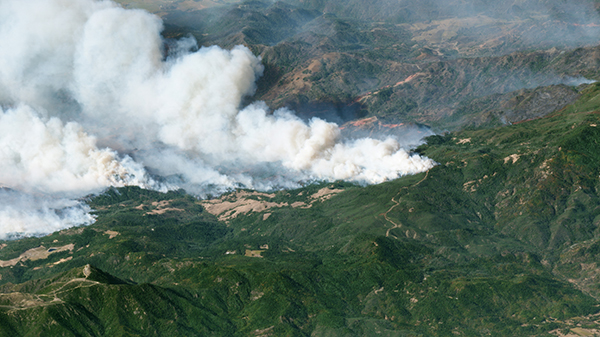 |
|
SkySat • Kincade Fire, CA • October 27, 2019
|
|
Satellites not only visualize wildfires but also help measure their impacts.
An orbital perspective provides authorities with a more comprehensive view of a fire’s behavior.
Up-to-date monitoring can show a wildfire’s progression through a landscape, as seen in California’s Beckwourth Complex Fire from last summer.
|
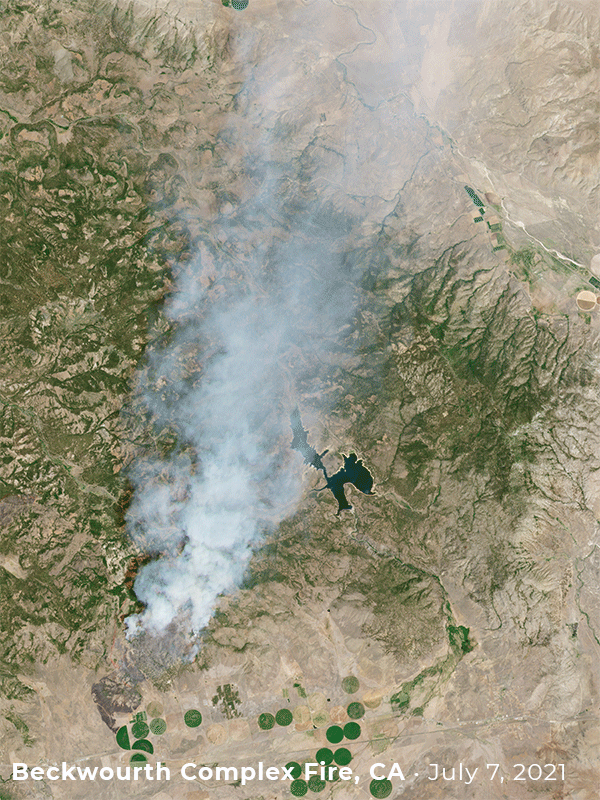 |
|
Caption: PlanetScope • Beckwourth Complex Fire, CA • July 7 - 12, 2021
|
|
Satellites not only visualize wildfires but also help measure their impacts.
An orbital perspective provides authorities with a more comprehensive view of a fire’s behavior.
Up-to-date monitoring can show a wildfire’s progression through a landscape, as seen in California’s Beckwourth Complex Fire from last summer.
|
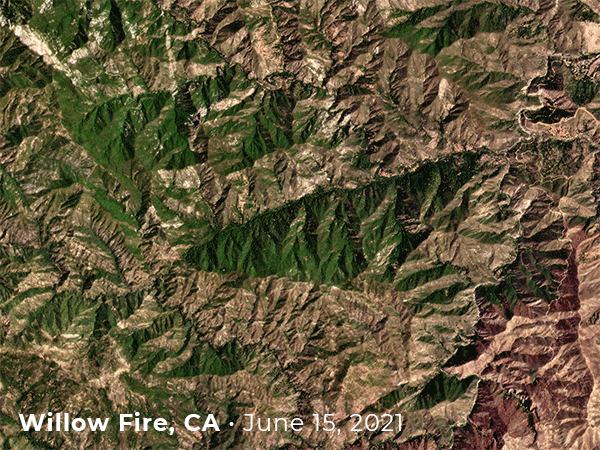 |
|
PlanetScope • Willow Fire, CA • June 15 - 21, 2021
|
|
Planet’s satellites also automatically take images of fires when tipped from the MODIS instrument aboard NASA’s Terra and Aqua satellites.
The largest and most intense fires detected daily by MODIS are used to point a SkySat to collect high-resolution views, which allows us to monitor the impact of both natural and human-made blazes.
|
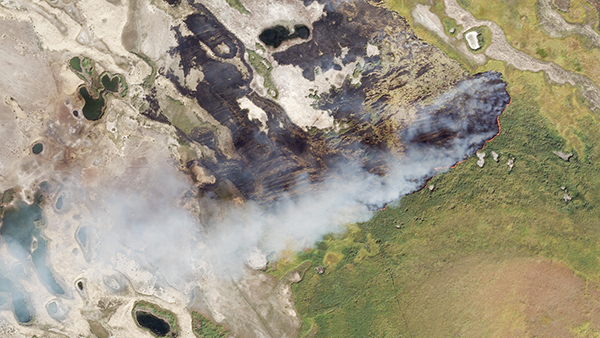 |
|
SkySat, tipped by MODIS • Brush fire, Kazakhstan • September 11, 2020
|
|
Wildfires aren’t, however, unique to the Western United States.
They occur all around the world.
And the global implications of climate change are exacerbating fires everywhere.
Last summer, hundreds of wildfires broke out across Mediterranean countries following a severe heat wave.
|
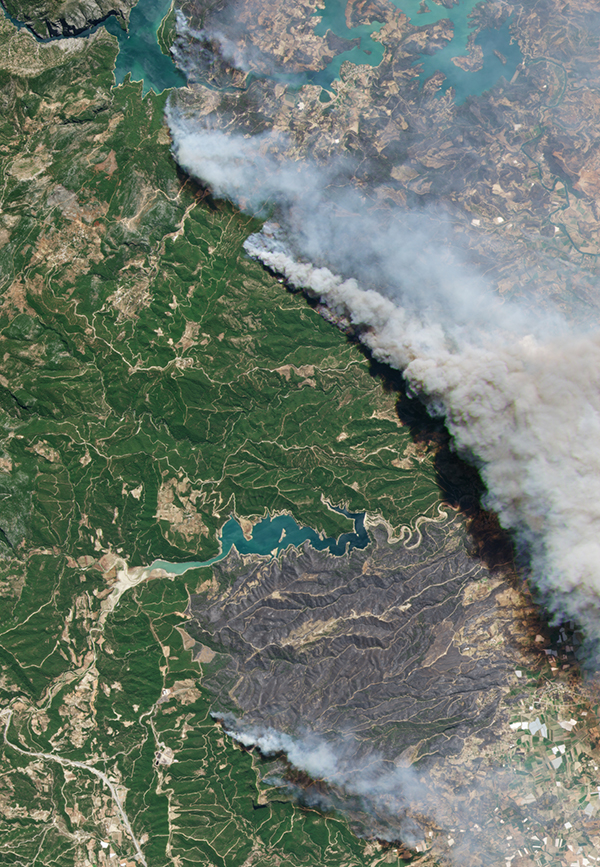 |
|
PlanetScope • Manavgat, Turkey • July 29, 2021
|
|
From a photographic perspective, satellite imagery has been key to illustrating the scope and destructive capability of wildfires.
Each year seems to bring distressing new records, and with them, greater efforts to visualize, measure, and communicate their impact.
Satellite data provides critical observations, but it is just one of many approaches needed to help mitigate the impacts of wildfires.
|
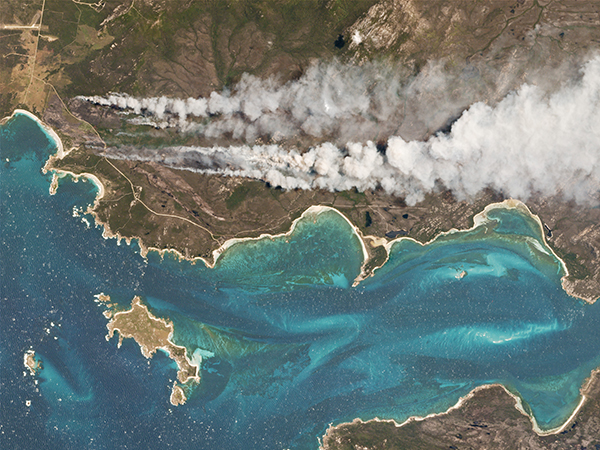 |
|
PlanetScope • Cape Barren, Australia • May 12, 2016
|
|
|
|
Moon Valley
|
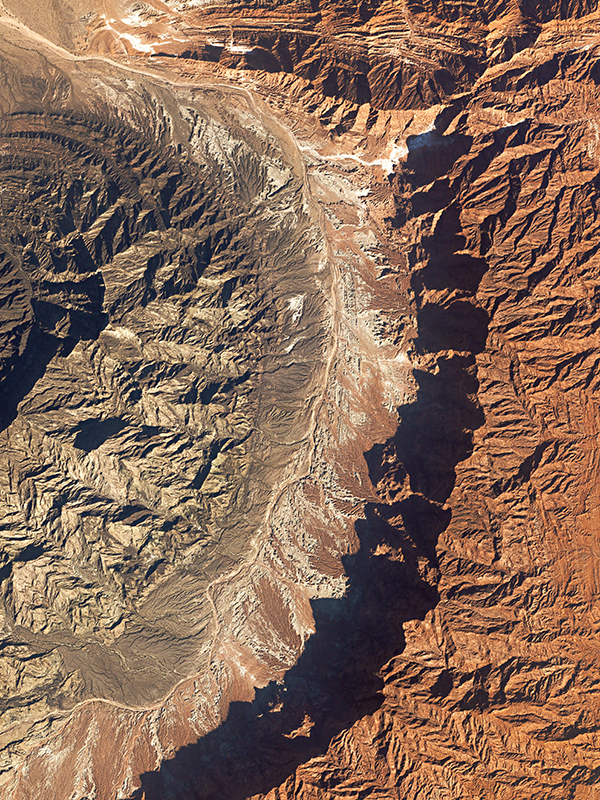 |
|
PlanetScope • Chile • July 19, 2016
|
|
Salt, rock, and sand meet in Chile’s Atacama desert to create otherworldly formations.
Valle de la Luna (Moon Valley) is the more approachable counterpart to its neighbor, Valle de la Muerte (Death Valley).
Wind and sand shaped its unique formations over millennia, and the area’s lack of humidity makes it particularly inhospitable.
A Mars rover prototype was even tested here, since the region’s dry and rocky terrain is comparable to that of the red planet.
|
|
|
|
Super Bowl Construction
|
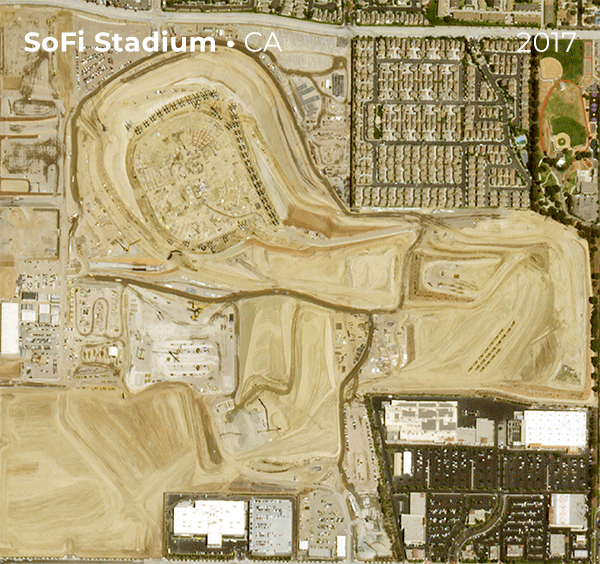 |
|
SkySat • SoFi Stadium, Inglewood, CA • 2017 - 2022
|
|
The Los Angeles Rams played on their home turf last Sunday to beat the Cincinnati Bengals in Sunday’s Big Game.
But it was the non-football fanfare that attracted the most media attention this year: a star-filled halftime performance and a noteworthy number of crypto commercials, to name a couple.
All of this took place in the newly-constructed SoFi stadium, which replaced a former horse racing course.
|
|
|
|
Super Bowl Construction
|
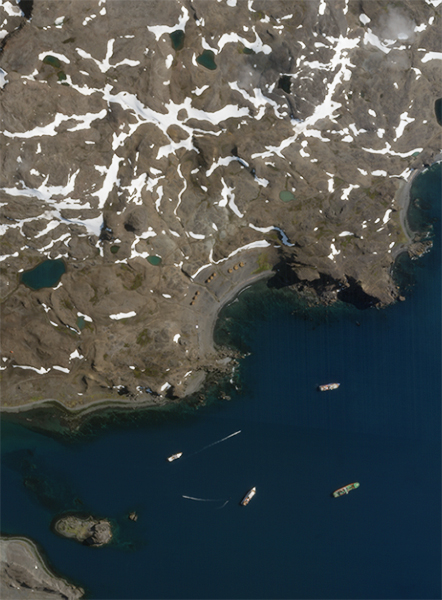 |
|
Caption: PlanetScope (unprocessed) • Antarctica • 2022
|
|
It seems that runners have been trying to up the ante ever since a Greek messenger ran 25 miles from the city of Marathon to Athens with news of victory.
Since the 1990s, athletes (including Planeteer Hilary Ranieri) have gathered in Antarctica for a snow-covered, penguin-filled marathon.
Take a look at the course on the day of this year’s event!
|
|
|
|
|
|
|
|